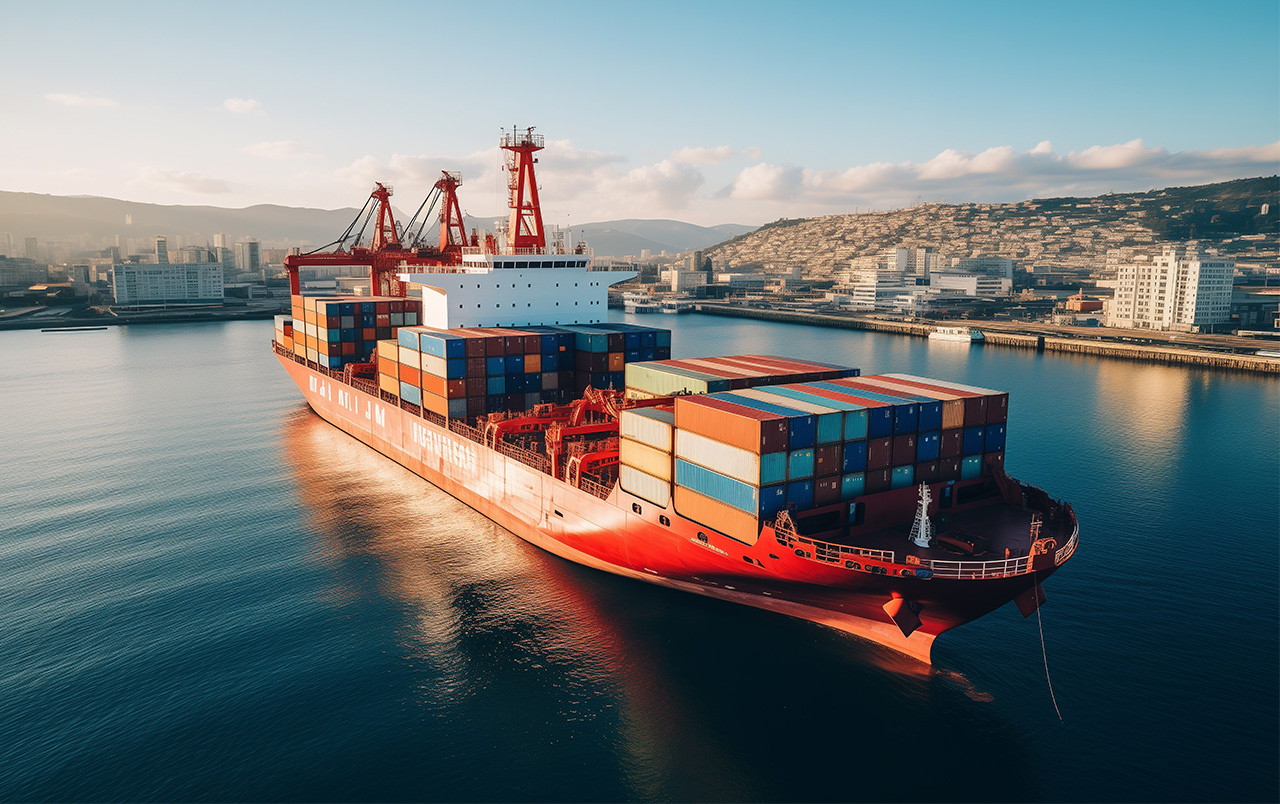
In the realm of heavy machinery and material handling, understanding the nuances between different equipment is crucial for optimizing operations. Cranes and reach stackers are both pivotal in industries like shipping, construction, and logistics, yet they serve distinct roles. While cranes have been the cornerstone of lifting and moving heavy loads for decades, the reach stacker forklift has emerged as a versatile alternative, especially in container handling. This article delves into the fundamental differences between cranes and reach stackers, exploring their functions, applications, and advantages in modern industry.
Fundamental Design and Structure
The design of a machine often dictates its capabilities and optimal use cases. Cranes come in various forms, such as tower cranes, mobile cranes, and overhead cranes, each tailored to specific tasks. They typically consist of a hoist, wire ropes or chains, and sheaves, enabling them to lift loads vertically and move them horizontally within a limited range.
In contrast, a container reach stacker is a type of forklift designed for handling intermodal cargo containers. It combines the lifting capability of forklifts with extended reach, allowing operators to stack containers in multiple rows and tiers. The machine features a telescopic boom, enabling it to reach over obstacles and stack containers up to five units high in the second row.
Mobility and Operational Range
Mobility significantly impacts the efficiency of material handling equipment. Mobile cranes, while capable of traveling on roads, often require set-up time and are limited by their bulk and the need for stabilizing outriggers during operation. Their movement while carrying loads is restricted due to safety concerns and stability issues.
Reach stackers, on the other hand, offer superior mobility within confined spaces. They can transport containers over short distances rapidly, maneuvering with agility in storage yards and ports. The ability of a walkie reach stacker to move while carrying a load enhances operational efficiency, reducing the time between lifting and stacking tasks.
Load Capacity and Handling
Load capacity is a critical factor when selecting equipment for specific tasks. Cranes are engineered to handle extremely heavy loads, with some models capable of lifting hundreds of tons. This makes them indispensable for constructing high-rise buildings, bridges, and heavy infrastructure where substantial weight lifting is required.
Reach stackers have a lower maximum load capacity compared to cranes, typically handling up to 45 tons, which aligns with the weight of standard shipping containers. Their strength lies in the ability to lift and stack containers efficiently rather than lifting exceptionally heavy singular items.
Flexibility in Operations
Flexibility is essential in dynamic work environments like ports and warehouses. Cranes require significant space and preparation for setup and operation, which can be a limitation in crowded or rapidly changing environments.
A forklift reach stacker excels in flexibility, adapting quickly to different tasks without extensive setup. Operators can switch between lifting, transporting, and stacking within minutes. This adaptability maximizes productivity, especially in industries where time and space are at a premium.
Technological Advancements and Efficiency
Technological innovation has propelled both cranes and reach stackers into new realms of efficiency. Modern cranes feature computer-assisted controls, precision handling, and enhanced safety features like load moment indicators and anti-collision systems.
Similarly, reach stackers have benefited from technological upgrades. Innovations include hybrid and electric powertrains for reduced emissions, advanced telemetry systems for real-time monitoring, and ergonomic designs to improve operator comfort and productivity. Companies like Hunan Tona Machinery Technology Co., Ltd. are at the forefront of integrating these technologies into their reach stacker models.
Safety Considerations
Safety remains paramount in operating heavy machinery. Cranes have stringent safety protocols, including regular inspections, operator certifications, and adherence to load charts. The significant heights and weights involved necessitate meticulous attention to prevent accidents.
Reach stackers also require strict safety measures. Operators must be trained to handle the machine's dynamics, especially when lifting and moving loads at height. Stability can be affected by uneven terrains or improper load handling, making safety training and adherence to operational guidelines essential.
Cost Implications and Maintenance
Financial considerations play a significant role in equipment selection. Cranes represent a substantial investment, not only in purchase price but also in transportation, setup, and maintenance costs. Their specialized nature means higher expenses for parts and skilled technicians.
Reach stackers generally have lower acquisition and operational costs. Maintenance is more straightforward due to standardized parts and widespread availability of service providers. Over the lifespan of the equipment, reach stackers can offer more economical operation, especially for businesses primarily involved in container handling.
Environmental Impact
Environmental sustainability is increasingly important in industrial operations. Cranes, particularly older models, may consume significant amounts of fuel and emit higher levels of pollutants. Upgrading to modern, energy-efficient models is costly but can reduce environmental impact.
Reach stackers are advancing towards greener operations. Electric and hybrid models reduce emissions and fuel consumption. The commitment of manufacturers, such as Hunan Tona Machinery Technology Co., Ltd., to innovation supports industry efforts to minimize environmental footprints.
Applications in Industry
Understanding the optimal use cases for cranes and reach stackers enhances decision-making in equipment investment. Cranes are indispensable in construction for erecting structures, installing heavy components, and accessing elevated work areas.
Reach stackers dominate in port operations, rail yards, and intermodal facilities. Their ability to swiftly move and stack containers improves logistical efficiency. The walkie reach stacker variant caters to warehouse environments, handling loads in tight spaces where larger equipment cannot operate.
Case Study: Enhancing Port Efficiency
A leading port in Asia sought to improve its container handling throughput. Previously relying on gantry cranes exclusively, the port faced bottlenecks during peak times. By integrating reach stackers into their operations, they increased flexibility, allowing for simultaneous loading and unloading of containers. This hybrid approach optimized space utilization and reduced vessel turnaround time.
Training and Operator Expertise
Skilled operators are essential for maximizing the potential of both cranes and reach stackers. Crane operation requires extensive training due to the complexity and risk involved. Operators must understand load dynamics, signaling, and emergency procedures.
Reach stacker operators benefit from training focused on maneuverability and load handling in various conditions. The intuitive controls of modern reach stackers reduce the learning curve, but proficiency is necessary to ensure safety and efficiency. Companies investing in operator training often see improved productivity and reduced accident rates.
Regulatory Compliance
Regulations govern the use of heavy machinery to protect workers and the public. Compliance with standards such as OSHA guidelines in the United States is mandatory. For cranes, this includes inspections, certifications, and adherence to operational limits.
Reach stackers must also comply with safety and emissions regulations. Staying updated with changing laws, such as emissions standards for diesel engines, is critical. Manufacturers like Hunan Tona Machinery Technology Co., Ltd. design equipment to meet or exceed these requirements, providing assurance to operators and stakeholders.
Technological Integration and Future Trends
The future of material handling equipment lies in technological integration. Automation and remote operation are becoming feasible, enhancing safety by removing operators from hazardous environments. Cranes are beginning to feature semi-autonomous controls, assisting operators with precision tasks.
Reach stackers are at the forefront of automation in container handling. Advances in sensors and machine learning enable these machines to identify and handle containers with minimal human input. The integration of fleet management software allows for real-time tracking and optimization of equipment usage.
Impact of Industry 4.0
Industry 4.0 concepts are reshaping equipment design and operation. The Internet of Things (IoT) facilitates communication between machines, providing data analytics for maintenance and operational efficiency. Predictive maintenance reduces downtime by addressing potential issues before failures occur.
Hunan Tona Machinery Technology Co., Ltd. exemplifies this trend by incorporating smart technologies into their products. Their commitment to innovation ensures that equipment not only meets current needs but is also adaptable to future technological advancements.
Conclusion
Cranes and reach stackers serve distinct yet occasionally overlapping roles in material handling. Cranes excel in heavy lifting and construction applications, offering unparalleled lifting capacities. Reach stackers provide unmatched flexibility and efficiency in handling containers and materials within ports, warehouses, and intermodal terminals.
Choosing between a crane and a reach stacker depends on specific operational needs, load requirements, space constraints, and budget considerations. Understanding these differences enables businesses to make informed decisions, enhancing productivity and safety. As technology continues to evolve, both cranes and reach stackers will integrate advanced features that promote efficiency and environmental sustainability. Embracing these innovations positions industries to meet future challenges and demands effectively.
Frequently Asked Questions
1. What are the main advantages of using a reach stacker over a crane?
Reach stackers offer greater mobility and flexibility, especially in confined spaces like ports and warehouses. They are more efficient for stacking and moving containers over short distances, reducing operational time and costs compared to cranes.
2. Can reach stackers handle the same weight as cranes?
No, cranes generally have a much higher lifting capacity than reach stackers. While cranes can lift hundreds of tons, reach stackers typically handle loads up to 45 tons, suitable for standard shipping containers.
3. Are there environmental benefits to using reach stackers?
Yes, modern reach stackers often feature electric or hybrid powertrains that reduce emissions. Companies like Hunan Tona Machinery Technology Co., Ltd. design equipment with environmental sustainability in mind, contributing to greener operations.
4. What industries benefit most from using reach stackers?
Industries involved in shipping, logistics, and intermodal transportation benefit greatly from reach stackers. They enhance efficiency in ports, rail yards, and warehouses by streamlining container handling processes.
5. How does operator training differ between cranes and reach stackers?
Cranes require extensive training due to their complexity and the risks involved with heavy lifting at significant heights. Reach stacker training focuses on maneuverability and safe handling of loads in various conditions, with a generally shorter learning curve.
6. What innovations are shaping the future of reach stackers?
Technological advancements like automation, IoT integration, and the use of AI for operational efficiency are shaping the future of reach stackers. Manufacturers are incorporating these features to improve safety and productivity.
7. Why might a company choose equipment from Hunan Tona Machinery Technology Co., Ltd.?
Hunan Tona Machinery Technology Co., Ltd. is a leader in custom bulk container handling equipment. Their commitment to innovation and quality service provides customers with advanced products that meet specific operational needs, ensuring excellent value.








